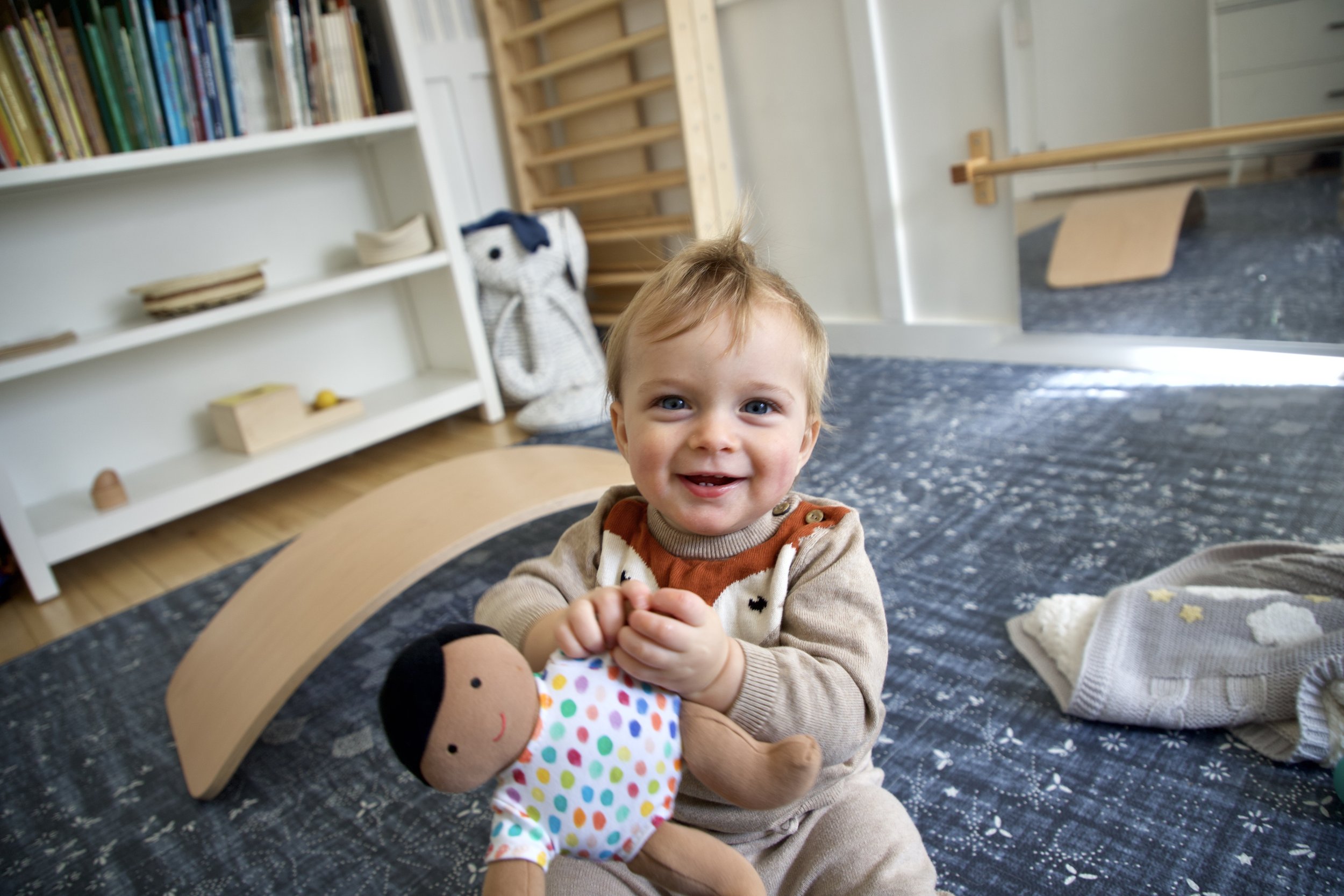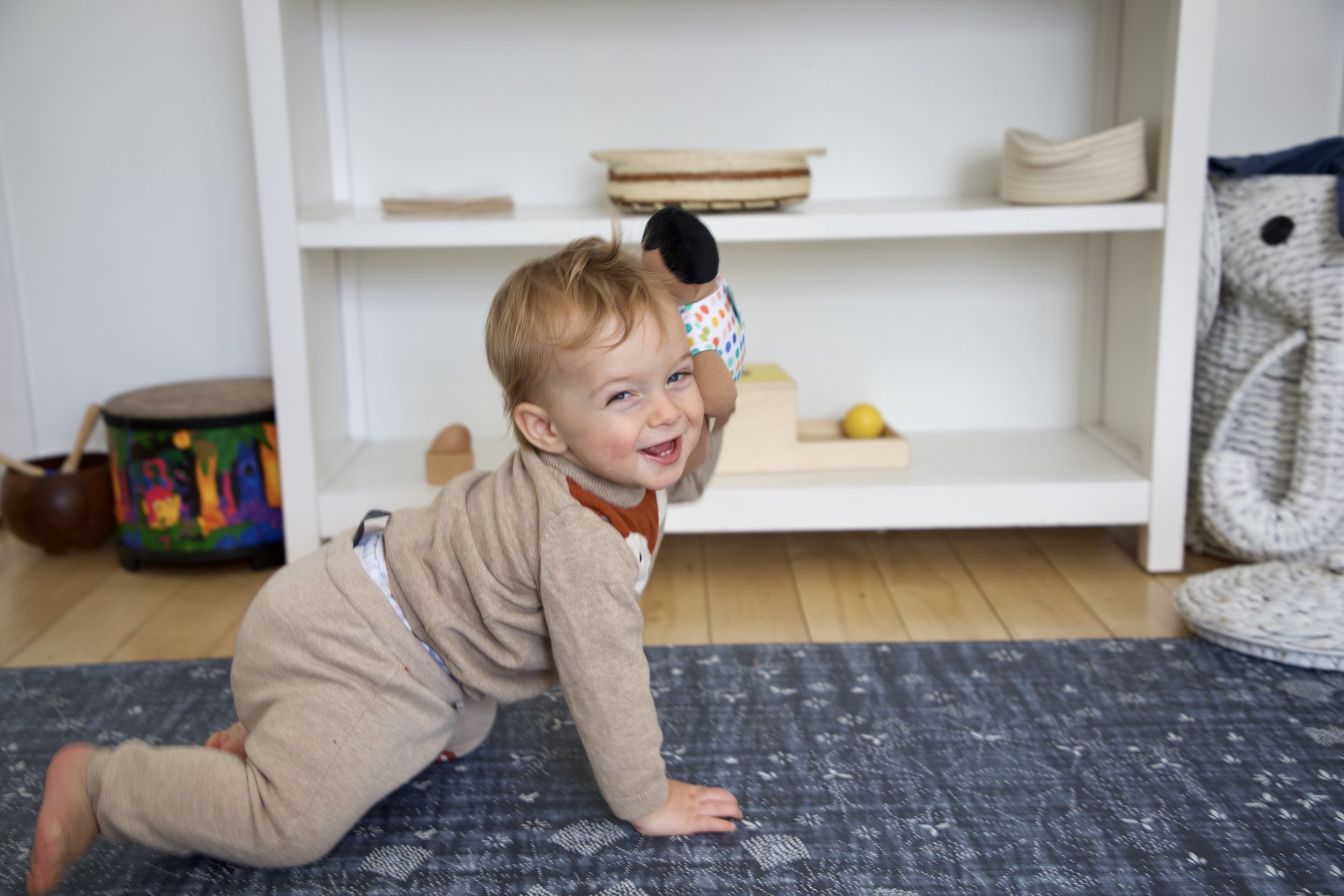Open v. Close-Ended Toys
This post may contain affiliate links, which means I may earn a small commission if you buy through my link but does not change your price.
One question I get a lot is about the difference between open-ended and close-ended toys. I often mention them as toys that are not our Montessori materials. I have gotten a lot of requests to dig deeper into the question than a comment reply on a reel allows.
In our home we have both open-ended and close-ended toys.
Open-ended toys are toys that can be used in many different ways. They do not have one specific purpose. Take blocks for example. With blocks you can build a tower, build a city and use them as buildings, use them as a car, use them as a phone, and use them in many other ways. There really are no limits to what a block can do. There also is no specific purpose to them. They are vaguely meant to be for building, but the options of what to build are endless.
Close-ended toys on the other hand have a specific purpose. They do one thing. Often close-ended toys get a bad rap because they are associated with one-and-done active toys that have the purpose of entertaining the child. For example, a toy that will play lights and sounds when a child presses it. In general I avoid toys like that.
However, not all close-ended toys are like that. Montessori materials (generally called materials, rather than toys) are close-ended. Take an object permanence box, for example. The purpose of the object permanence box is for the child to put the ball through the hole and observe as it comes out onto the tray. Generally a parent or Montessori guide will model for the child how to use the material before presenting it to them. Then the child is left to experiment with it themselves to master it. That said, just because a material is close-ended does not always mean it will be used in the specific way it is designed or modeled. If it is not being used in a way that is dangerous or destructive, I let him be.
Both open-ended and close-ended toys have their benefits.
Open-ended toys are wonderful for developing social skills playing together and for fostering creativity and imagination. They are particularly of interest to children who are into pretend play (which often really blows up around 2 1/2 years of age). They get a lot of use because they can be used in many different ways.
Close-ended toys allow children to isolate skills and develop mastery through their own experimentation. Going back to the object permanence box, a child first starting will often struggle to get the ball into the hole. A child who has worked on it for awhile will easily put the ball in the hole. They master it and are then ready for a more challenging one, say with a door to get the ball out. A close-ended toy can give a child just the right amount of challenge that they develop concentration and build skills.
Here are a few examples of both kinds of toys.
Open-ended toys: blocks, dolls, balls, the Grimm’s rainbow, play silks
Close-ended toys: a ring stacker, a puzzle, an object permanence box, the knobbed cylinders, the pink tower, a shape sorter
Interestingly, while for many, open-ended wooden toys have become associated with Montessori, in general, you will not see open-ended toys in a Montessori classroom. They are usually more associated with educational philosophies such as Waldorf. However, you will find open-ended toys in a Montessori home. There are a lot of benefits of having both types of toys in a home.
Our favorite toys and the ones shown in these photos are from the Lovevery playkits.




